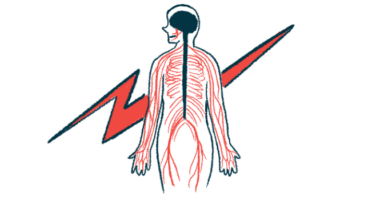Enrollment full in trial of Scone device for overactive bladder
About 80% of people with MS have urinary problems from neurogenic bladder

A clinical trial testing SpineX‘s Scone neuromodulation device for treating a neurogenic, or overactive, bladder, a common symptom of multiple sclerosis (MS), has finished enrolling patients.
Called CONTINENCE (NCT05301335), the study enrolled adults with overactive bladder due to MS, stroke, or spinal cord injury at a dozen sites in the U.S., Canada, and India.
SpineX’s researchers anticipate the trial participants will see a significant improvement in self-reported symptoms associated with neurogenic bladder. If the data are positive, the findings should support an application to the U.S. Food and Drug Administration for Scone’s approval.
“Scone has the power to transform the lives of millions of patients with neurogenic bladder,” Parag Gad, SpineX’s co-founder and CEO, said in a company press release. ”The data from this study will be used in SpineX’s anticipated De Novo FDA Submission in the coming months and we anticipate access to market later this year.”
The nerve cell damage that occurs in people with MS can result in a number of symptoms, including some related to an impaired communication between nerves and muscles. A neurogenic bladder occurs when the nerve signals that coordinate the muscles around the bladder to control urination are impaired, causing a frequent or urgent need to urinate, waking up at night to urinate, or incontinence, that is, the inability to hold urine.
About 80% of people with MS have some degree of urinary problems due to a neurogenic bladder.
How does Scone help an overactive bladder?
Scone delivers an electrical current to the spinal cord to correct the neurological deficit that’s contributing to the overactive bladder. It does that through electrodes that are placed on the skin directly over certain parts of the spinal cord.
In the trial, participants are receiving treatment with Scone or a sham device in one-hour sessions twice a week for 12 weeks, or about three months.
The study’s main goal is to see if the treatment significantly eases neurogenic bladder symptoms, as determined by the Neurogenic Bladder Symptom Score, which is based on a patient’s self-administered questionnaire and ranges from 0 (no symptoms) to 74 (severe symptoms).
Secondary goals include the number of urge urinary incontinence episodes and a Patient Global Impression of Improvement score, which measures a patient’s interpretation of symptom changes after treatment.
Treatment with the device should restore sensation and improve the bladder’s capacity to hold urine, reducing urinary urgency, frequency, and the number of urine leaks, according to SpineX. No currently approved therapy can address all these issues together.
The device has been granted breakthrough device status in the U.S., which is meant to accelerate its regulatory review and approval by providing incentives such as more frequent interactions with the FDA.







